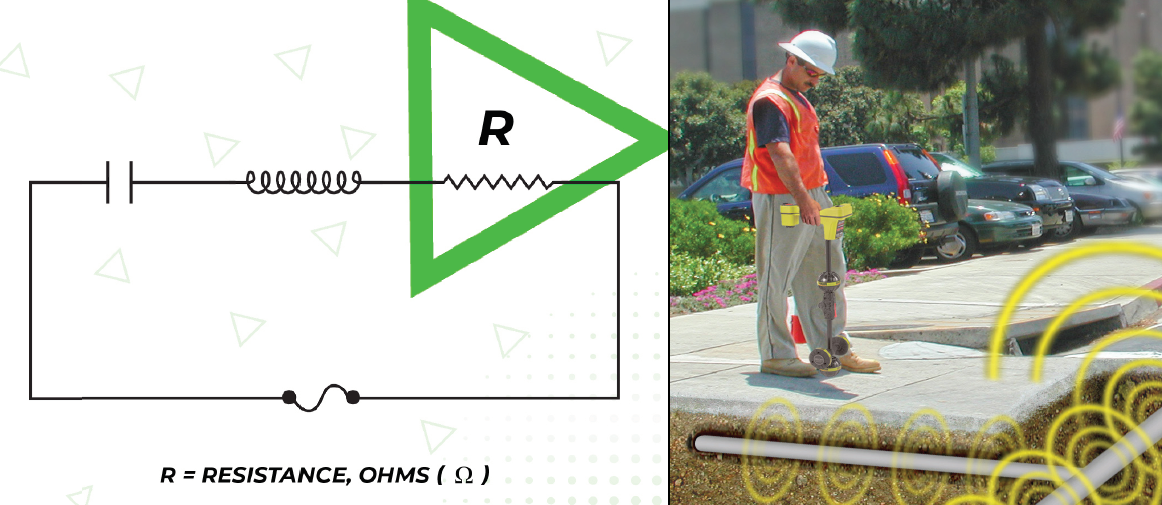
Utility Locating & Resistance
The art of electromagnetic utility locating is based on locating the signal that’s created when electrical current is flowing on a conductor (the utility), creating an electrical circuit between the transmitter, the utility, the earth, and the transmitter’s ground. Knowing how electricity behaves within the utility locating circuit can help you when locating.
One important property of an electrical circuit is the amount of electrical resistance that’s present.
It is measured in ohms Ω, named after German physicist Georg Ohm, and plays an important factor in locating. The opposite of resistance is
conductance, which is how easy it is for current to flow through a conductor.
Resistance is one of the many varying factors below ground that can affect the way current flows on a buried utility. Higher resistance can make a utility harder to locate — the more resistance there is, the less current will flow on the conductor, and the weaker the signal will be. This is explained with Ohm’s law, which dictates that the amount of current in a conductor is equal to the voltage—or the difference in electrical potential between two points in the circuit—divided by the resistance of the conductor.
What Causes Resistance?
Resistance is affected by the utility’s condition and material, as well as environmental factors such as location, moisture levels, soil type, and salinity.
One quick way to improve your locating circuit is by reducing resistance. It’s important to remember that current flows by following the path of least resistance, so by lowering the resistance in your locating circuit, you’ll keep more current on the utility and heading back to the transmitter’s ground.
The following is a short but non-exhaustive list of factors that can cause greater resistance in a locate. Knowing which factors you can and can’t control can help you determine what conditions you’re working with, and what steps, if any, you can take to lower resistance.
- Earth resistivity – Resistance varies greatly depending on your location. Coastal areas can have lower resistance than mountainous regions.
- Type of soil – Regardless of where you’re located, it’s harder for current to travel through sandy soil than clay or loam soil. Adding water or a beverage with electrolytes where you’ve placed your ground can reduce resistance in the circuit.
- Moisture content of soil – Dry soil has higher resistance than moist soil. This means weather and seasons can play a large role in the resistance of the circuit.
- Temperature – Lower temperatures increase resistance.
- Continuity of target line – Insulators or gaskets between sections can impede or block current flow, especially at lower frequencies. Using a higher frequency can help current flow past obstructions like these.

